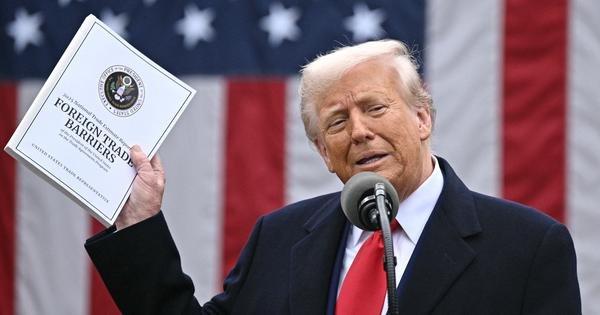The Trade Deficit: A Sign of America’s Strength
Trump’s Tariffs and the Trade Deficit

On April 2, 2025, US President Donald Trump introduced new tariffs on imported goods, causing global trade to be disrupted and markets to plummet. The White House argued that the move was essential to tackle the national emergency caused by the large and persistent trade deficit.
The Bright Side of an Investment Magnet
A trade deficit, which occurs when a country imports more than it exports, is often perceived as a negative. However, the US trade deficit is actually a sign of America’s financial and technological dominance.
- A trade deficit does not mean the US is losing money.
- It simply means foreigners are sending the US more goods than the US is sending them.
- America is receiving more affordable goods, and in return, it is giving foreigners financial assets.
- A trade deficit can only occur if foreigners invest more in the US than Americans invest abroad.
The US can maintain a large trade deficit because many foreigners are keen to invest here. One major reason is the safety of the US dollar, which is used for saving, trading, and settling debts globally.
Global Capital
Another reason for foreigners’ consistent demand for US assets is American technological dominance. When aspiring entrepreneurs from around the world start new companies, they often choose to do so in Silicon Valley. Foreigners want to buy stocks and bonds in these new companies, further increasing the US investment surplus.
This strong demand for US assets also explains why Trump’s previous trade war in 2018 had little effect on closing the trade deficit. Tariffs alone do not reduce foreigners’ demand for US dollars, stocks, and bonds. If the investment surplus remains unchanged, the trade deficit cannot change.
It’s worth noting that no other country enjoys a similarly sized investment surplus. America’s financial and technological dominance allows it to escape the dynamic of a typical country with a typical currency.
That doesn’t mean all tariffs are bad or all trade is automatically good. But it does mean that the US trade deficit, despite its misleading name, does not indicate failure. Instead, it is the result and the privilege of outsized American global influence.
If the president genuinely wants to eliminate the trade deficit, his best option is to reduce the federal budget deficit, which would naturally lower capital inflows by raising domestic savings.
Rather than reviving US manufacturing, Trump’s extreme tariffs and erratic foreign policy are likely to deter foreign investors and undermine the dollar’s global role. That would indeed decrease the trade deficit but only by weakening the very foundations of the country’s economic dominance, at a significant cost to American firms and families.
Tarek Alexander Hassan is Professor of Economics, Boston University.
This article was first published on The Conversation.



